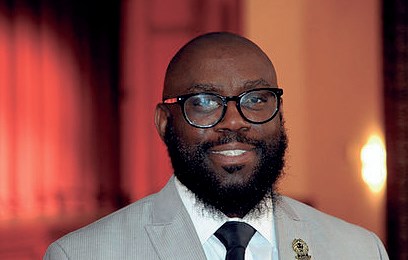Staff Report
MIAMI, Fla. – The Institute of Museum & Library Services (IMLS) has announced awards totaling $3,231,000 in Museum Grants for African American History and Culture (AAHC) to build the capacity of African American museums and support the growth and development of museum professionals at African American museums.
The Black Archives History & Research Foundation of South Florida, Inc., was one of a total of 72 organizations – and the only in South Florida – to receive the federal grant.
The organization will use the funding to expand public accessibility to its collections by adopting a new web-based collections management software and implementing a digitization project.
With the grant funds, the Black Archives will purchase a Quartz A0 HD LED large object scanner to digitize its periodical collection, including the Tropical Dispatch, Nite Life, and the Miami Times, South Florida’s oldest black newspaper.
The Black Archives has the largest and most comprehensive holding of material related to people of African descent in South Florida in the 20th Century. Along with the newspaper collections, it includes over 2,500 linear feet of primary source materials, personal and professional papers, scrapbooks, billboards, photographs, and oral histories on both audio and videotape.
“The Black Archives is the leading archival source for South Florida’s black history, and this project is a game changer for our organization,” said Timothy A. Barber, Black Archives executive director.
“This grant will allow us to not only
provide more accessibility to our holdings through digitization, but also allow our organization to use these newly gained resources to empower other Black organizations to maintain the integrity of their collections.”
The Black Archives History & Research Foundation of South Florida is a photographic and manuscript archival research repository dedicated to documenting the history of people of the African Diaspora in Miami-Dade County from 1896 to the present.
Founded in 1977 by Dr. Dorothy Jenkins Fields, the Black Archives became one to the largest repositories for the history of Blacks in Miami-Dade County.
The nonprofit organization is housed at the Black Archives Historic Lyric Theater (BAHLT) Cultural Arts Complex, a historic landmark on the National Register of Historic Places built in 1913.
Due to the great expense of the equipment, many non-traditional archival institutions have to depend on the resources of larger academic institutions to digitize their collections.
This allows the Black Archives to keep their holdings in-house, and train archival staff so that the organization can work with smaller non-traditional organizations to help them digitize their own collections.
The project will engage undergraduate and graduate students from local universities as paid interns to assist archival staff with the project, providing them with skills in document handling and digitization while building and expanding their work experience in the museum field. The archives will also establish a new virtual research service to be utilized by the public to interact with archival staff for real-time research.
Since 2009, the Black Archives was successful in obtaining the federally-funded IMLS grants three of the four times they applied. Previous grants have been to assist the organization with capacity building, professional development, internship programs within the archival department, and helped to create the organization’s first online archival presence.
“Our track record of success with the Institute of Museum and Library Services is a testament to our commitment to doing the work necessary to maintain good stewardship of the collections in our care,” said Barber.
“Our mission is to preserve, protect, and disseminate, South Florida’s Black history from 1896 to present. In order to continue to carry out our mission effectively, we have to think about what it means to preserve, protect, and disseminate this history in the technological era. This IMLS grant project will allow us to solidify our history’s place in the future.”









No Comment